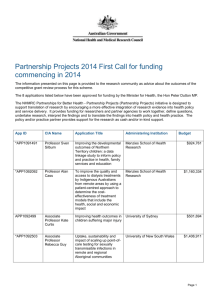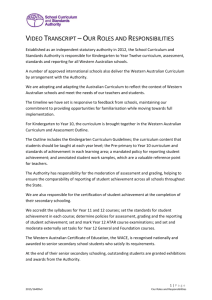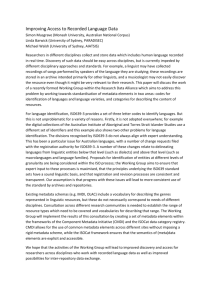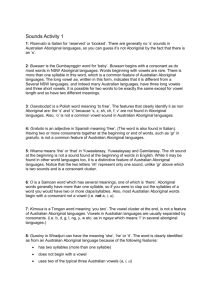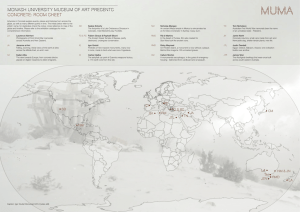Auditory function and the shaping of phonologies
advertisement
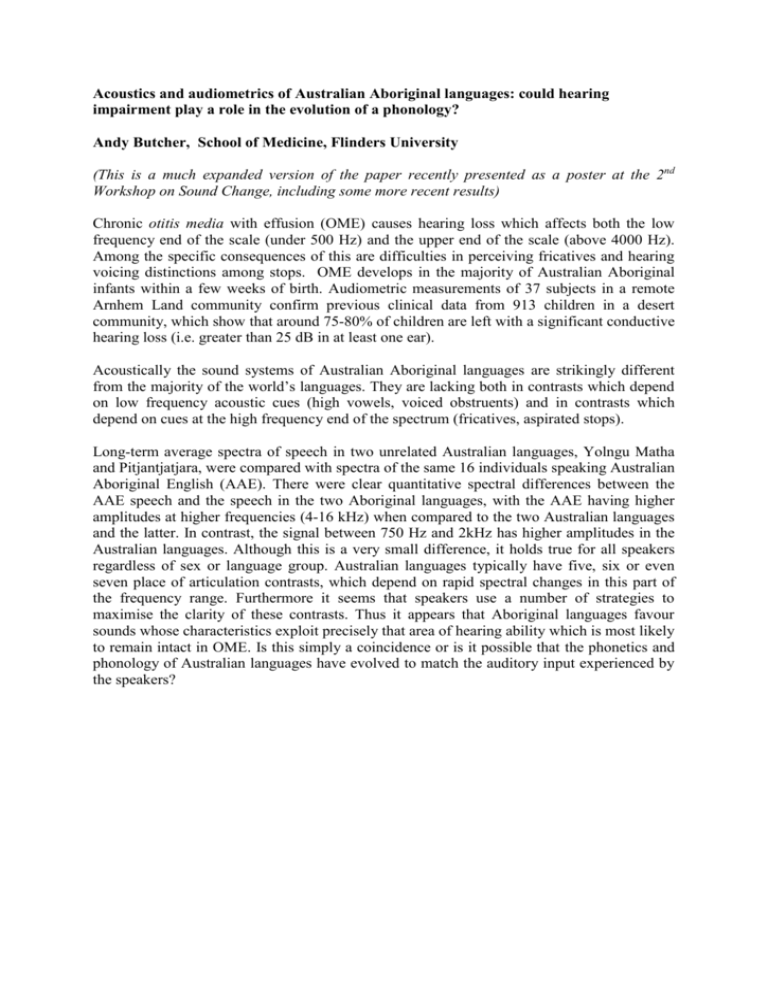
Acoustics and audiometrics of Australian Aboriginal languages: could hearing impairment play a role in the evolution of a phonology? Andy Butcher, School of Medicine, Flinders University (This is a much expanded version of the paper recently presented as a poster at the 2nd Workshop on Sound Change, including some more recent results) Chronic otitis media with effusion (OME) causes hearing loss which affects both the low frequency end of the scale (under 500 Hz) and the upper end of the scale (above 4000 Hz). Among the specific consequences of this are difficulties in perceiving fricatives and hearing voicing distinctions among stops. OME develops in the majority of Australian Aboriginal infants within a few weeks of birth. Audiometric measurements of 37 subjects in a remote Arnhem Land community confirm previous clinical data from 913 children in a desert community, which show that around 75-80% of children are left with a significant conductive hearing loss (i.e. greater than 25 dB in at least one ear). Acoustically the sound systems of Australian Aboriginal languages are strikingly different from the majority of the world’s languages. They are lacking both in contrasts which depend on low frequency acoustic cues (high vowels, voiced obstruents) and in contrasts which depend on cues at the high frequency end of the spectrum (fricatives, aspirated stops). Long-term average spectra of speech in two unrelated Australian languages, Yolngu Matha and Pitjantjatjara, were compared with spectra of the same 16 individuals speaking Australian Aboriginal English (AAE). There were clear quantitative spectral differences between the AAE speech and the speech in the two Aboriginal languages, with the AAE having higher amplitudes at higher frequencies (4-16 kHz) when compared to the two Australian languages and the latter. In contrast, the signal between 750 Hz and 2kHz has higher amplitudes in the Australian languages. Although this is a very small difference, it holds true for all speakers regardless of sex or language group. Australian languages typically have five, six or even seven place of articulation contrasts, which depend on rapid spectral changes in this part of the frequency range. Furthermore it seems that speakers use a number of strategies to maximise the clarity of these contrasts. Thus it appears that Aboriginal languages favour sounds whose characteristics exploit precisely that area of hearing ability which is most likely to remain intact in OME. Is this simply a coincidence or is it possible that the phonetics and phonology of Australian languages have evolved to match the auditory input experienced by the speakers?


